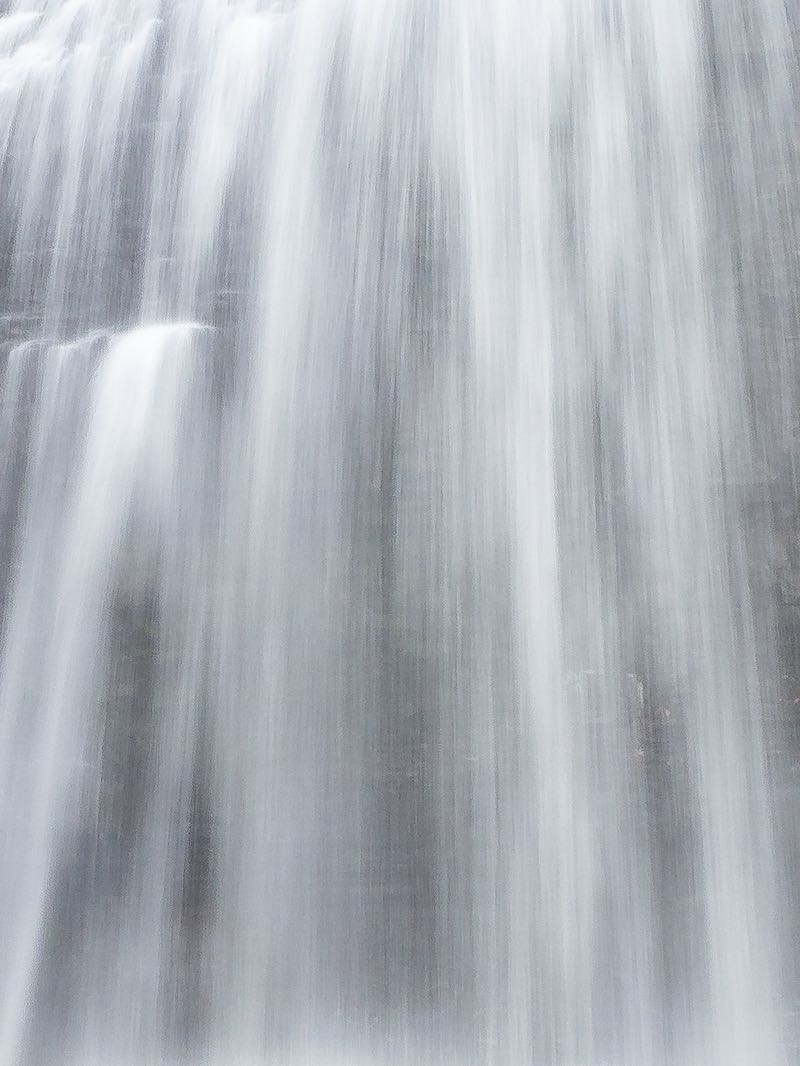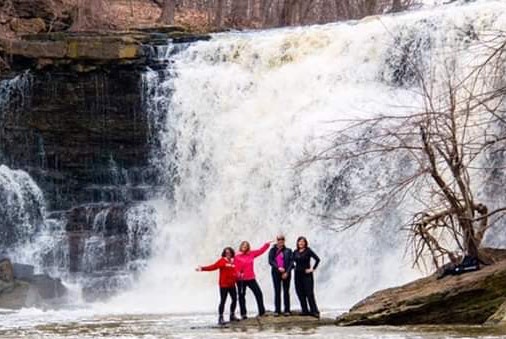






Much of Ontario’s early development was influenced by waterfalls. Even today we can see evidence of how they have shaped our society.
Since time immemorial, waterfalls were used by Indigenous peoples as meeting places. They represented easily identifiable spots along the otherwise endless river landscape. Some, like Chaudiere Falls, are still seen as sacred.
When European explorers arrived in Upper Canada they also used lakes and rivers to get around. Just like the Indigenous peoples, the newcomers also found waterfalls to be obstacles to transport, and, eventually, to trade.


The fur trade required the voyageurs to travel great distances. Many died along the way, and some historians report that many of these deaths occurred at waterfalls or rapids.
Waterfalls were also deadly obstacles to the early lumber industry. Logs were sent to market by floating them down rivers, and many a lumberjack lost their life trying to break up logjams that occurred at the top of waterfalls and rapids. Places like Sandy Gray Rapids are named after lumbermen that lost their lives.
As the provincial economy grew, a number of canals were constructed to facilitate shipping and provide military connections. Locks are needed whenever a canal has to overcome elevation changes. The presence of falls required each of the province’s major canal systems to be fitted with locks.
Locks along the Welland Canal bypass Niagara Falls some 11 km to the west. In contrast, locks on the Trent-Severn Canal are within earshot of waterfalls like Fenelon Falls, Burleigh Falls or Big Chute. There are locks on the Rideau Canal near Rideau Falls and the Merrickville Rapids, and also at the St. Marys Rapids at Sault Ste Marie.


Waterfall sites were coveted by early settlers. The energy of falling water could turn a waterwheel, allowing sawmills to saw or gristmills to grind.
Historic mills (or the ruins of them) can be seen beside waterfalls at Almonte, Elora, Inglis Falls, Merrickville, Rock Glen, and so on.
Mills usually attracted other businesses, which in turn attracted workers and their families. The importance of waterfalls is hard to miss in some ‘waterfall towns’, such as Almonte, Bracebridge, or Elora.
A number of old historic mills can still be found in Ontario. Some have been restored and are operated solely by the power of falling water. These include the Roblin Mill at Black Creek Pioneer Village in Toronto, as well as the Lang Mill near Peterborough.
While some are next to waterfalls, many others aren't. These can still make good water-power pitstops on a waterfall road trip.
Other mills were repurposed into different uses, while others still sit idle, waiting for someone to come along with a good idea. Still more have been reduced to a pile of rubble, while all that is left of others is an old mill pond.


Later, the power of falling water was used to generate electric power. And not just at Niagara... generating stations are found next to dozens of Ontario’s waterfalls.
Hydro-electricity is a sort of enemy of waterfalls, since water must be diverted away from the falls to feed the station's turbines. At the same time, their power literally built and run much of Ontario's growth.
Some sites can still be magnificent, as power authorities allow some water to flow over the falls at the same time. But other waterfalls have been lost altogether; either flooded or used as the base for a dam.
The influence of waterfalls on our landscape can also be seen in other ways. This can be as insignificant as a little bend or interuption in the road network.
Since falls and rapids often occur at the narrowest spot along a river, they were frequently used as places to construct bridges. A shorter bridge meant decreased construction costs, even if spoiled the view in some places.
Bridges cross over the top of places like Ritchie Falls, Bracebridge Falls, and Whitefish Falls, just to name a few.



Join our Facebook community to share tips, photos and updates. Operating since 2011, this well-moderated, respectful, and informative group is the hub of Ontario's waterfalling community. (Photo by Martin Van Opstal)
